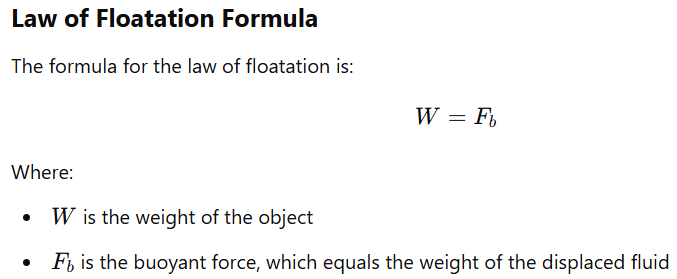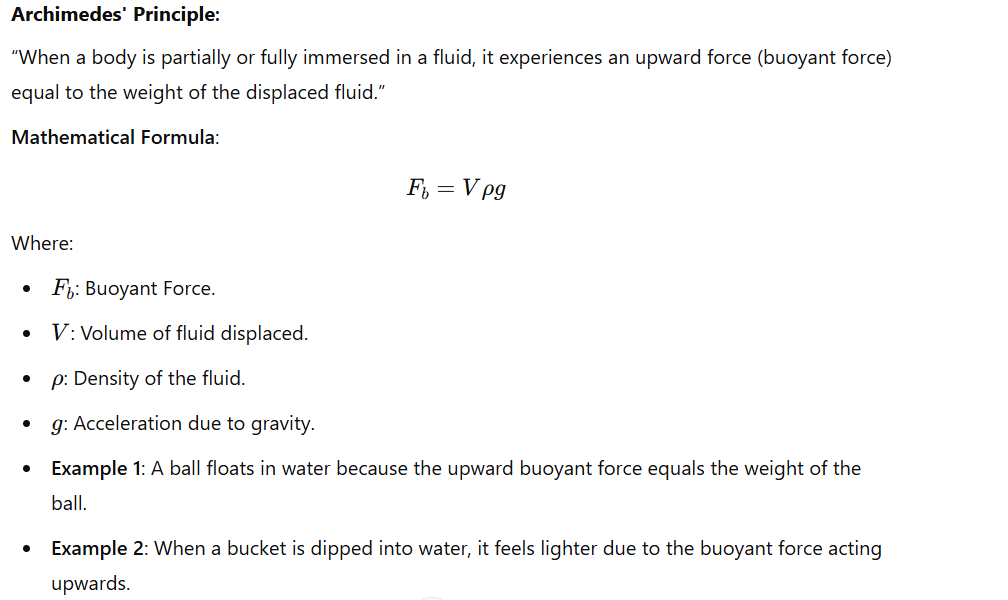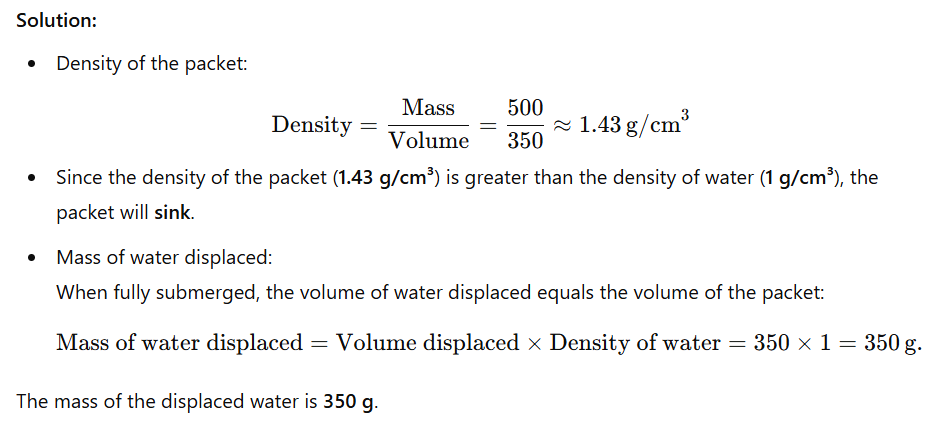Floatation is a fascinating topic that introduces students to essential principles of physics, helping them understand how objects interact with fluids. This blog post provides a comprehensive overview of the Floatation Class 9th, covering important keywords and concepts such as the law of floatation, Archimedes’ principle, and common questions and answers related to the topic.
Floatation: Class 9 notes
Floatation is the phenomenon that determines whether an object will sink or float in a fluid. It depends on the forces acting on the object, including gravitational force and buoyant force (upthrust). Mastery of this topic helps students develop a deeper understanding of fluid mechanics and its applications in real life.
Floatation Class 9 Notes
To simplify your learning, here are key points to remember about floatation:
- Buoyant Force (Upthrust):
When an object is immersed in a fluid, it experiences an upward force equal to the weight of the fluid displaced. - Archimedes’ Principle:
This principle states that a body submerged in a fluid experiences an upthrust equal to the weight of the displaced fluid. - The Law of Floatation:
- An object floats if its weight is equal to the thrust exerted by the fluid.
- For floating objects, the weight of the fluid displaced is equal to the object’s weight.
- Factors Influencing Floatation:
- Density of the object
- Density of the fluid
- Volume of the displaced fluid
What is the Law of Floatation?
The law of floatation can be summarized as follows:
- A floating body displaces a fluid whose weight is equal to its own weight.
This principle forms the basis of designing ships, submarines, and other buoyant structures.
Upthrust in Fluids, Archimedes’ Principle, and Floatation
Understanding the relationship between upthrust, Archimedes’ principle, and flotation is critical. Here’s a breakdown:
- Upthrust in Fluids: The upward force exerted by the fluid on an object.
- Archimedes’ Principle: Explains the origin of the upward force.
- Floatation: Occurs when the thrust balances the weight of the object.
What is the Principle of Floatation?
The principle of floatation is derived from Archimedes’ principle. It states that for a body to float, the weight of the fluid displaced must equal the body’s weight. This principle is why large ships made of heavy steel can float—they displace enough water to balance their weight.
Law of Floatation Formula

3 Laws of Floatation
- A floating body displaces a fluid equal to its own weight.
- A body sinks if its density is greater than the fluid’s density.
- A body floats if its density is less than or equal to the fluid’s density.
Floatation Class 9 Notes with Examples
1. Thrust and Pressure
Thrust:
Thrust is the total force acting perpendicular to a surface. For example:
- The weight of an object placed on a table applies thrust on its surface.
- A person standing on soft ground applies thrust downward due to their weight.
Pressure:
Pressure is the force acting per unit area. It is given by the formula: Pressure =Thrust/Area
- Unit: Pascal (Pa), where 1 Pa=1 N per m.sq.
- Example 1: A sharp knife applies greater pressure compared to a blunt knife because the area of contact is smaller.
- Example 2: A person wearing high heels exerts more pressure on the ground than someone wearing flat shoes due to the smaller area of contact.
2. Density and Relative Density
Density (ρ\rho):
Density is the mass per unit volume of a substance.
ρ=Mass/Volume
- Example 1: Oil floats on water because its density is less than water.
- Example 2: A stone sinks in water as its density is higher than water.
Relative Density

3. Buoyancy and Archimedes’ Principle
Buoyant Force:
The upward force exerted by a fluid on a submerged or partially submerged object. It depends on:
- Volume of fluid displaced.
- Density of the fluid.
Archimedes’ Principle:

4. Laws of Floatation
Conditions for Floatation:
- An object floats if its weight equals the buoyant force.
- An object sinks if its weight exceeds the buoyant force.
Examples:
- Example 1: A ship floats on water because its shape ensures that the weight of the displaced water equals the weight of the ship.
- Example 2: An iron nail sinks in water because its density is much higher than water, so it cannot displace water equal to its weight.
5. Applications of Floatation
- Ships and Boats:
- Ships are designed to displace a large volume of water so that the upward buoyant force balances their weight.
- Example 1: Cargo ships carrying heavy loads float due to their hollow structure, making their overall density less than water.
- Submarines:
- Submarines adjust their buoyancy by filling tanks with water to sink or releasing water to rise.
- Example 2: When a submarine submerges, its tanks are filled with water to increase its density and make it sink.
Floatation Class 9 Questions and Answers
1. Why is it difficult to hold a school bag having a strap made of a thin and strong string?
Answer: When the strap of a school bag is thin, the pressure exerted on your shoulder increases because pressure is inversely proportional to the area of contact (P=F/A). A smaller area leads to higher pressure, making it uncomfortable and difficult to hold the bag.
2. What do you mean by buoyancy?
Answer: Buoyancy is the upward force exerted by a fluid on an object when it is immersed partially or completely in the fluid. This force makes objects feel lighter when submerged in a liquid.
3. Why does an object float or sink when placed on the surface of water?
Answer:
- An object floats if its density is less than that of water because the buoyant force equals or exceeds the object’s weight.
- An object sinks if its density is greater than water because the buoyant force is less than the weight of the object.
4. You find your mass to be 42 kg on a weighing machine. Is your mass more or less than 42 kg?
Answer: The weighing machine measures the apparent weight, which includes the effect of the buoyant force exerted by the air. Since air exerts a small upward force, your actual mass is slightly more than 42 kg.
5. You have a bag of cotton and an iron bar, each indicating a mass of 100 kg when measured on a weighing machine. In reality, one is heavier than the other. Can you say which one is heavier and why?
Answer: The iron bar is heavier because the bag of cotton occupies a larger volume and experiences a greater buoyant force from the air, making its apparent weight slightly less than its true weight.
6. In what direction does the buoyant force on an object immersed in a liquid act?
Answer: The buoyant force always acts in the upward direction, opposite to the force of gravity.
7. Why does a block of plastic released under water come up to the surface of water?
Answer: The block of plastic is less dense than water, so the buoyant force acting upward is greater than the weight of the plastic. This makes it rise to the surface.
The volume of 50 g of a substance is 20 cm³. If the density of water is 1 g/cm³, will the substance float or sink?

The volume of a 500 g sealed packet is 350 cm³. Will the packet float or sink in water if the density of water is 1 g/cm³? What will be the mass of the water displaced by this packet?





